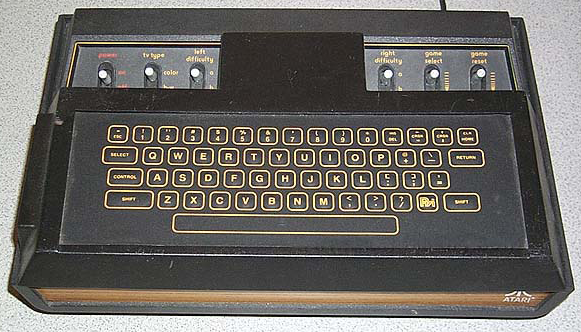

The Graduate Computer
Announced on February 9th, 1983. This was to be Atari's entry into the emerging VCS keyboard market. The unit plugged into the VCS cart port and was self-contained, much like how the 5200 VCS adapter works (using the base system for power and display only). It was actually developed outside of Atari, by a company called Peripheral Visions, Inc., which was formed in late 1982 by 3 former Commodore VIC-20/C-64 engineers (Charles Winterble, Al Charpentier, and Bob Yannes). Winterble conceived of the idea to turn the VCS into a computer, and they called it "My First Computer". Designed with a $29.95 price, it was to feature a membrane computer and have BASIC built-in. PVI approached Ray Kassar with the idea, and he agreed to purchase it for a million dollars. Under the deal, PVI would develop the hardware and Atari the software. The product was given the model number CX-3000 and was known by several names during its development ("My First Computer", "2600 Computer", "The Graduate") while undergoing several changes (case designs, features, price points, etc).
The designers invented a 3-cycle "Bus Stuff" mode to achieve a faster TIA register update rate. This works by loading Y with $FF at the beginning of the kernel, and then having the 6507 execute 3-cycle STY $REG instructions. At the critical moment when the $FF is being written, The Graduate hardware steps in and overdrives the desired value on the bus.
It was shown at the 1983 Summer CES show, along with the printer and wafer drive, before ultimately being cancelled by James Morgan when he took over as the new CEO of Atari in September 1983. An ongoing lawsuit against PVI by Commodore was likely the main motivating reason for its cancellation.
Soon after PVI was formed, Jack Tramiel heard PVI approached Atari and filed a ("exploratory") lawsuit against them, claiming they stole trade secrets. PVI were forced to disclose details of their VCS project. Tramiel insisted that was his product, and pursued the case. PVI eventually won, but it cost them several years and approximately $300,000
